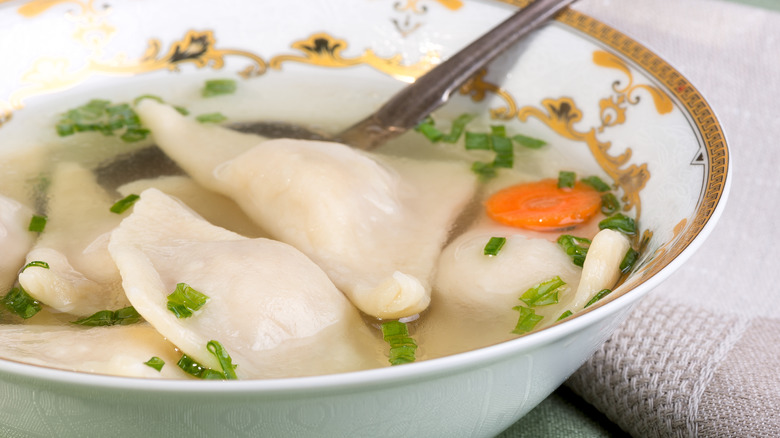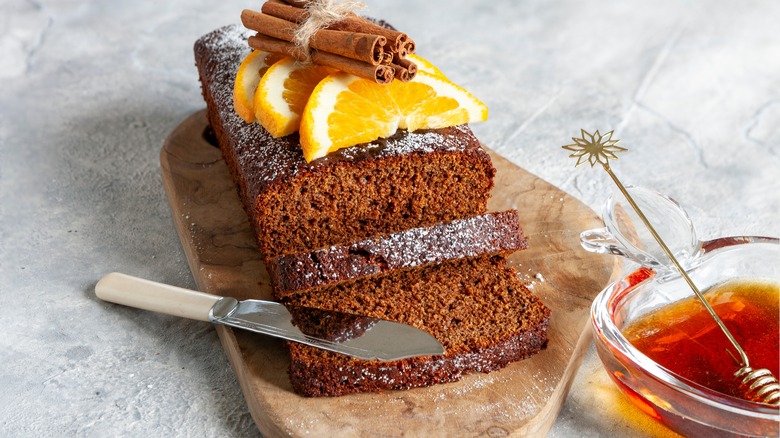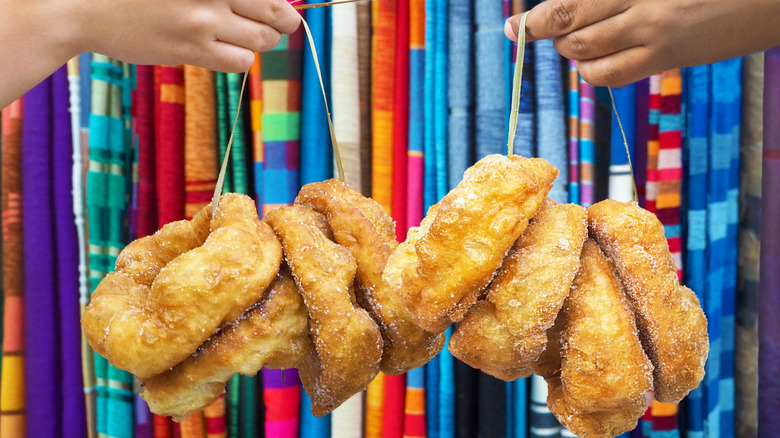The Symbolic Foods Eaten During The Pre-Fast Meal Of Yom Kippur
Yom Kippur is the holiest day of the Jewish calendar, known as the Day of Atonement. It is a period for self-reflection, making amends, prayer, and atonement, embodied by fasting. The approximately 25-hour fast begins before sunset on the first night until the reappearance of stars in the sky on the following night. While knowing how to gently break a Yom Kippur fast is important for avoiding digestive distress, the pre-fast meal is full of spiritual significance and just as crucial to getting through the fast easily.
The last meal before the fast is the seudah hamafseket in Hebrew, which translates to the "meal of cessation," or, the "separation meal." Foods eaten during this meal are rife with symbolic meanings, as well as practical reasons for being consumed — nutritional content and being filling for the period of abstinence that follows. Challah with honey is a common dish — but protein is also important.
Chicken, for example, is one of the most common foods served for the pre-fast, in part because it's a good source of lean protein, but also because of what it stands for. Often served boiled with rice, roasted, or in kreplach (dumpling) soup, chicken is also central to the ceremony of kaparot. In the ritual, a chicken is passed over people's heads as a token of absorbing their sins, then the bird is ritually slaughtered. Although this tradition is still observed in religious communities, many opt to simply eat chicken as a nod to the practice.
What to eat before Yom Kippur for an easier fast
Challah is central at the seudah hamafseket table. Symbolic of bread given to priests before the destruction of the Temple in Jerusalem, today challah is sanctified with a blessing called hamotzi before eating. It's good to know what to look for when buying challah bread, as even its shape has a deeper meaning. For Yom Kippur, challah bread is formed round symbolizing the eternal, shaped into hands for hope, or into birds as aspiration toward heaven.
Although kugel is typically eaten on Hanukkah, it's also a Yom Kippur food. The baked casserole is made from noodles or potatoes and can be savory or sweet. It, too, is considered a holy food that's offered as a blessing, and its jumble of noodles is a metaphor for the interconnectedness of Jewish people. Furthermore, its complex carbohydrates help with maintaining energy, avoiding fluctuations in blood sugar, and feeling full for longer. It is recommended that the pre-fast meal be low in sodium to prevent thirst, as not even water is permitted while fasting — drinking plenty of water ahead of time can help prevent dehydration.
Another custom is to eat lekach, a honey cake, for dessert. Traditionally, the cake is asked for from a family member or rabbi, who then hands over the sweet treat. The idea is that you ask for something now, so there won't be a reason in the year ahead to beg for anything (implying that God provides).
Pre-fast dishes of Sephardic and Mizrahi Jews
Aside from the typical Ashkenazi foods, other Jewish ethnicities have their own pre-Yom Kippur traditions too. Sephardic Jews from North Africa also feature chicken on their tables. Moroccans roast whole chicken with cumin, paprika, and black pepper, or cook thighs in tomato sauce with beans for a version of loubia (meaning beans in Arabic) — spiced with ginger, turmeric, and saffron. Soups from Algeria and couscous from Tunisia also become tinted yellow from fragrant saffron. Side dishes and salads include things like eggplant with preserved lemons, lemony artichoke hearts, and fresh fava beans cooked in cumin and garlic.
Sfenj are Moroccan doughnuts that are usually eaten for Hanukkah, but they also make an appearance before Yom Kippur. The fried dough is unsweetened but can be coated in sugar or sweet glaze, and is distributed outside of synagogues before people enter for prayer.
Mizrahi Jews from the Middle East also have their own pre-fast customs. Moment Magazine describes a dish made by Persian Jews leading up to Yom Kippur called morgh tu-deli, which is a chicken stuffed with rice. Yemenite Jews may opt for lamb bone soup for dinner while having an earlier dairy lunch of ftout — made with pieces of Yemini flatbread (called salouf) that's cooked with toasted fenugreek and clarified butter. Milk and honey are sometimes added, and including eggs makes it a heartier meal in advance of an entire day of not eating.



